Pull sealing
tape back
Remove the plug
New
thumbwheel
Remove insert
The text in brackets refers to the corresponding user guide
chapter. [Chapter Number]
TIP COMPATIBILITY [2]
IDENTIFYING TIPS [3]
PLATEN VACUUM [4]
Make sure the vacuum indicator on the Operator Touchscreen
is green and showing that a small or large build sheet is in
place on the platen.
USING BUILD SHEETS [4]
Use clear build sheet for ABS-based, ASA, PC, PC-ABS, ST130.
Use smoky gray build sheet for ULTEM resin, PPSF, Antero.
Use green tinted build sheet for Nylon-based materials.
INSTALLING CANISTERS [4]
Remove the anti-rotation plug from side of canister before
use. Seal hole with sealing tape. Make sure the rubber
shipping insert is removed from the thumbwheel door
before building. Do not remove rubber shipping insert until
the canister is loaded into the canister bay.
Storing Canisters
Always replace the rubber shipping insert when storing a
partially used canister. Store canister vertically (as if it is
installed in a system) or cross-winding of the filament
on the inner spool may result.
CHANGING TIPS OR MATERIAL TYPE [4]
1. Remove the used build sheet from platen.
2. Clean the oven and tip wipe assembly.
3. Inspect the tip wipe assembly.
4. From the Build Screen, select Material/Tools and then select
Tips/Materials Change. Follow the screen prompts to
change tips.
The Tip Wizard will guide you through the process.
108313-0009_REV_C
The system automatically does the following:
- Unloads model and support
- Waits for oven to stabilize
- Performs Auto Z Zero Calibration
- Performs Auto Tip Calibration
- Loads model and support material*
- Builds a Calibration Job*
* Requires button to be pressed by user and then user
placement to build the calibration box.
7. Select the circle next to the desired tip. A black dot in the
center indicates which tip is selected.
AUTO COOLDOWN FEATURE [4]
This option acts as an energy saver when PC, PC-ABS, ULTEM
resin, or PPSF materials are being used. It also helps to prevent
parts from cracking when building large, thick parts using PPSF.
After building completes, the oven gradually cools to the standby
temperature. Wait until the PPSF parts are cool before removing
them from the oven. To use this feature go to the Administrator
screen, select System Default and then set Auto Cool Oven
to On or after the job.
STABILIZING OVEN [4]
When changing material type or using Auto Cool-Down, allow
oven temperatures to stabilize before calibration and system
use. Oven stabilization times are as follows:
Table 1-3: Oven Stabilization Times (Software V.3.27 and later*)
5. When changing liquefier tips.
Note: Worn tips cause part quality issues and can lead to loss
of extrusion. Always replace tips when prompted (reset
tip odometers).
Make sure
tip is fully
inserted into
block
6. When changing material type:
- Remove the canisters. If removing a partially used
canister, you must remove it immediately (within ten
seconds) after separating drive block from canister; otherwise
the filament is forced into the canister, making it unusable.
- Seal the canisters and store vertically.
- Insert new canisters and turn the thumbwheel to put
the canister in the “Ready”
state (flashing LED).
- If the removed tips are to be
re-used later, record material
type and volume.
- Make sure that you insert the
tip fully into the heater block.
Note: If material type is changed, the tips MUST be changed.
Do not use the same tip for different material types.
- Select Review Materials to Load and choose materials to load.
- Select Menu to continue.
All unused model and support
tips are interchangeable -
EXCEPT for Soluble
Release (SR) support tips.
Once a tip is used, it is
committed to that material
type and is no longer
interchangeable.
Tip size is imprinted on
the top side of the plate
(T12, T14, T16, T20)
The Soluble Release
support tip is shorter
than standard tips.
Tip size is imprinted on
the top side of the plate
(T12SR20, T12SR30,
T12SR100).
QUICK REFERENCE CARD
Fortus 900mc/F900
Table 1-2: Slice Height
Model Tip Slice Heigh t
T12
0.007 in. (0.178 mm)
T20 0.013 in. (0.330 mm)
T14
0.010 in. (0.254 mm)
T16, T16A, T20C, T20D
0.010 in. (0.254 mm)
T20B 0.013 in. (0.330 mm)
T40A 0.020 in. (0.508 mm)
Table 1-1: Available Tips
Material Model Tip Support Tip
ABSi*
ABS-M30
ABS-M30i
ABS-ESD7
T12, T16, T20
T12, T16, T20
T12, T16
T12SR20*
T12SR20* /
T12SR30
T12SR30
ASA T10, T12, T16, T20
T12SR30
Nylon 12
PC
PC-ABS
PC
PC-ISO
PPSF
TM
ULTEM 9085 resin
T12, T16, T20
T12, T16, T20
T12, T16, T20
T16, T20
T12
T16
T16, T16A, T20
T12SR100
T12SR100
T12SR20* / T12SR100
T16
T12
T16
T16
ULTEM 1010 resin
T14, T20
T16
T40A
T20B
ST130 T20B
T20
T40A
T20
Nylon 6 T16, T20
T12SR100
0.005 in. (0.127 mm)
T10
Nylon 12CF T20C
T12SR100
ANT 800NA T20D
T16
* For oven stabilizing times prior to software V.3.27, please consult
the appropriate user guide.
ANT 840CN03 T20D
T16
* Available on Fortus 900mc only, not F900
ULTEM™, 9085, and 1010 are trademarks of SABIC, its affiliates or subsidiaries.
Oven Stabilization
Times (Hours)
All ABS, ASA, ST130
& Nylons
PC & ULTEM 9085
resin & Antero
All ABS, ASA,
ST130 &
Nylons
PC & ULTEM
9085 resin &
Antero
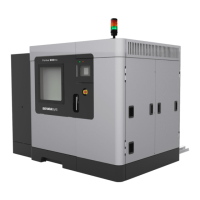
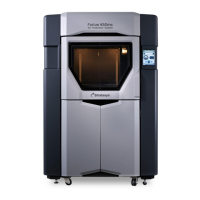

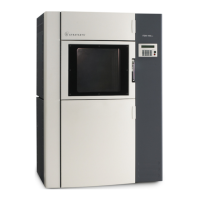
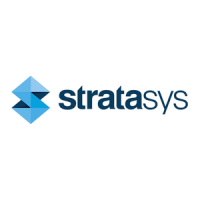
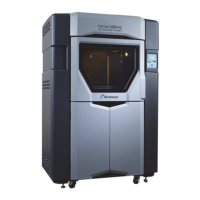
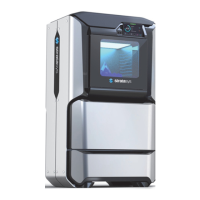
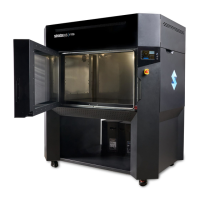


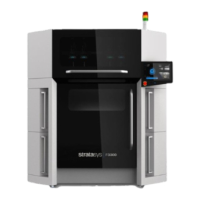
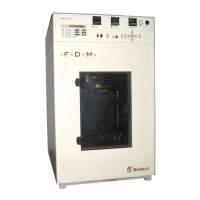
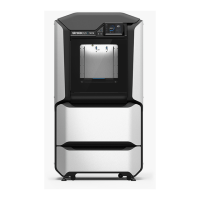
